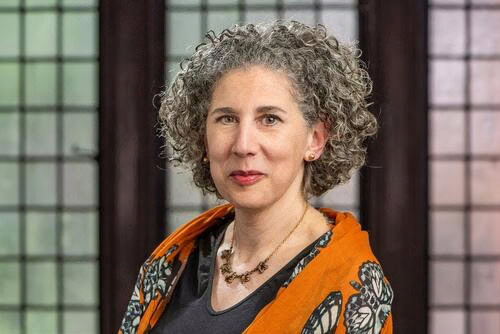Celebrating the AAR Members Awarded 2025 ACLS Postdoctoral Fellowships
We are excited to share that of the 62 scholars awarded 2025 ACLS Fellowships out of a pool of over 2,300 applicants, four AAR members were awarded funds to support their scholarship. Learn more about the fellows and their projects below.

Lloyd D. Barba
Lloyd D. Barba is an assistant professor of religion and core faculty in Latinx and Latin American Studies at Amherst College. He is a historian of religion in the Americas with training in Latinx history; American race, ethnicity, and immigration; and the American West/Mexico borderlands. His scholarship on Mexican farmworkers in California (1906-1966) is based on oral histories and extensive archival research. It also draws from the fields of immigration history, material culture, and scholarship on Pentecostalism and Catholicism.
Project
A Refuge of Resistance: A History of the U.S. Sanctuary Movement
“A Refuge of Resistance” will offer a historical sweep of the Sanctuary Movement from the 1980s to the present day. Sanctuary Movement activism arose across the United States in the 1980s when religious activists housed Central American refugees in places of worship and launched a public critique against the Reagan administration’s intervention in Central America. The movement then scored legal victories in the early 1990s, sunsetting the 1980s movement. From mid-2006 to 2007, during the debates on comprehensive immigration reform, organizers resurrected the movement as the New Sanctuary Movement. And following Trump’s first election, the United States witnessed another wave of sanctuary activism. To understand the connections between these related iterations of sanctuary, this project will offer a religious history of the movement long grounded in sacred resistance.

Laura Nasrallah
Laura Nasrallah is the Buckingham Professor of New Testament Criticism and Interpretation at Yale Divinity School, with a joint appointment in the Department of Religious Studies at Yale University. Her research and teaching brings together New Testament and ancient Christian literature with the archaeological remains of the Mediterranean world, and often engages issues of colonialism, gender, race, status, and power.
Project
Divination Machines in the Ancient Mediterranean World: Randomness, Meaning, and the Sublunar Condition
Ancient Mediterranean mechanisms for divination used randomizing procedures-such as a dice throw-so that a person could receive messages from the gods, sometimes offered through a verse from Homer or a line from the Bible. These divination machines provide a laboratory to learn about addressing uncertainty, interactions with non-human agents, creative theologies, the production and use of scriptures, and complex ideas of hermeneutics or literary criticism. They offered answers to questions anyone might wish to know: about children’s health, the success of a business, freedom and enslavement, a love interest, or the political state of the world. This project understands such devices, particularly ones from the second to fifth centuries CE, as machines with components that included materiality, such as stone, papyrus, and knucklebones; randomized procedures, like dice and numbers, verses or stories from literature; non-human beings; and the ritual expert who aided the petitioner. If one starts with these machines, rather than elite texts about fate, a story emerges about how a range of people, from poor to elite, wrestled with issues of justice, knowledge, and the cosmos’ organization, including whether divine providence touches those who live below the moon.

Jason Protass
Jason Protass is an associate professor of religious studies at Brown University. He is a historian of Chinese Buddhist religion, society, and literature and specializes in the eleventh to fourteenth centuries, the period of the Northern Song (960-1127), and its legacies.
Project
Heart of the River: A Buddhist History of the Lower Yangtze and Coastal Fujian
“Heart of the River” is a riverine history of Buddhism in China, and a Buddhist history of the lower Yangtze River and the coastal estuaries of Fujian. It tells the stories of four religious sites, each a riparian construction that first flourished in China’s Song dynasty, from 960 to 1279, and narrates their histories of maintenance, ruination, and reconstruction up to the present time. Each chapter triangulates local poetry and literature, geographic and environmental historical information, Chinese Buddhist liturgy, stelae inscriptions, and hagiography. Drawing together these various historical sources, “Heart of the River” foregrounds questions about the interlocking of human and nonhuman scales of time in Buddhist engineering; rivers, estuaries, and animals as agents in Buddhist history; how Buddhists understood “natural” disasters and cycles of reconstruction; and the aesthetic charisma and geospiritual affordances of islets. This will result in a history of Chinese Buddhism that accounts for the ways that Buddhists transformed the environments in which they lived. At the same time, careful historical work can reveal environmental subjectivities previously unknown.

Alexis Wells-Oghoghomeh
Alexis Wells-Oghoghomeh is an associate professor of religious studies at Stanford University. Her teaching and research explores the intersections of race, religion, and gender in the United States. A historian of African-American religion, she specializes in the religiosity of enslaved people in the South, religion in the African Atlantic, and women’s religious histories. Her first book The Souls of Womenfolk: The Religious Cultures of Enslaved Women in the Lower South (UNC 2021) offers a gendered history of enslaved people’s religiosity from the colonial period to the onset of the Civil War and won an AAR Book Award in 2022. You can listen to her discuss the book on the RSN Podcast.
Project
American Fetish: Black Women and Witchcraft in Early America
The historiography of witchcraft in the United States has long acknowledged the outsized role of the Tituba myth in the history of the Salem Witch Trials; however, few have pushed past the colonial northeast and Anglo-European women to critically examine how race, gender, religion, and slavery intersected to situate Black women as the most conspicuous alleged practitioners of “Black magic” in the US imagination. Drawing upon sources ranging from fifteenth-century accounts of western Africa to nineteenth-century US newspapers, “American Fetish” uses African and African-descended women’s encounters with practices termed “witchcraft” to argue for an expanded geographical, chronological, and racial narrative of the phenomenon in the United States. In this way, the project shows how religious categories like witchcraft structured gendered and racializing processes, rendering Black woman a legible category in the slavery era.
